|
|
Post by berkley on Oct 16, 2019 2:30:11 GMT -5
Ironic that they dubbed Neil Connery when he was after getting the job because of his voice in the first place.
I imagine that Lois Maxwell and the others would all be fired if the same thing happened today. Nice to see things were different back then, if only in this one instance.
|
|
|
|
Post by codystarbuck on Oct 16, 2019 11:17:16 GMT -5
Ironic that they dubbed Neil Connery when he was after getting the job because of his voice in the first place. I imagine that Lois Maxwell and the others would all be fired if the same thing happened today. Nice to see things were different back then, if only in this one instance. I assume the dubbing was due to his acting kills and line delivery. Funny thing is, the dubbing doesn't really improve things (rarely does). Neil did a few other movies, including the Hong Kong film, Aces Go Places 3, as Mr Bond. He has 11 credits, on imdb, including a few tv shows. He still did better than Stanley Caine, who had 4 credits, 3 of which were in his brother's films. |
|
|
|
Post by codystarbuck on Oct 16, 2019 23:22:22 GMT -5
So, before we leave the 60s, we need to take a peek at a last entry, which bridged over into the 70s. This was a British tv series that delved into the darker aspects of counter-espionage, with a reluctant spy who was pressed into service. if this sounds a bit like Harry Palmer, you might understand why I first mistook the movie version of this series as a later Harry Palmer film that was recast to replace Michael Caine. The series is called Callan and starred Edward Woodward.  The series made its debut in 1967, as a teleplay for the ITV anthology series Armchair Theater. This pilot episode was titled "A Magnum for Schneider. It was written by James Mitchell, who would write most of the episodes in the series, as well as a novel, based on the teleplay. The pilot features David Callan, a former agent of The Section, a counter-espionage group who targets dangerous individuals and eliminates them. They use a color-coded file system: white-to be neutralized through courts, bankruptcy or incarceration in a mental hospital; blue-member of the "wrong party," yellow-occasional surveillance, and red-dangerous, marked for elimination. Callan was considered to volatile and too curious about his targets. he is too dangerous to be left to his own devices; so, his former boss, Hunter, has him placed in a dead-end bookkeeping job. There, he makes the acquaintance of a man named Schneider, who is a fellow war games enthusiast. Hunter invites Callan back to the Section and tasks him to eliminate Schneider, but he will have to do it without support. He isn't satisfied with their reasoning and investigates Schneider and discovers he is involved in major gun running. Satisfied that he is deserving of assassination, Callan works his way into his circle. meanwhile, he contacts a dodgy "friend," called Lonely, to acquire a Noguchi .357 Magnum revolver (a fictional weapon). Lonely does so and Callan launches his plan and is invited to Scheider's home for some war games and a luncheon. Unbeknownst to Callan, Hunter has another agent, Toby Meres, arrange to set up Callan, to ensure he is caught for the murder of Schneider. Schneider discovers Meres and hold him and Callan at gunpoint and checks for weapons; but, misses the revolver taped to Callan's ankle. Callan gets to the weapon and shoots him dead. He then knocks Meres out and leaves him for the police to find, alerting Hunter to that fact. Hunter then orders Callan's file to be coded Red.  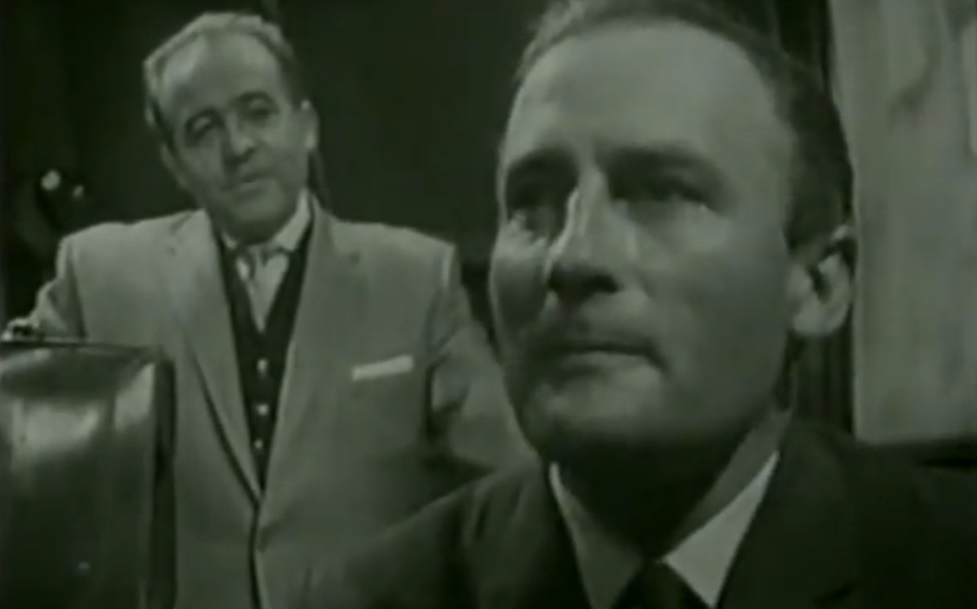 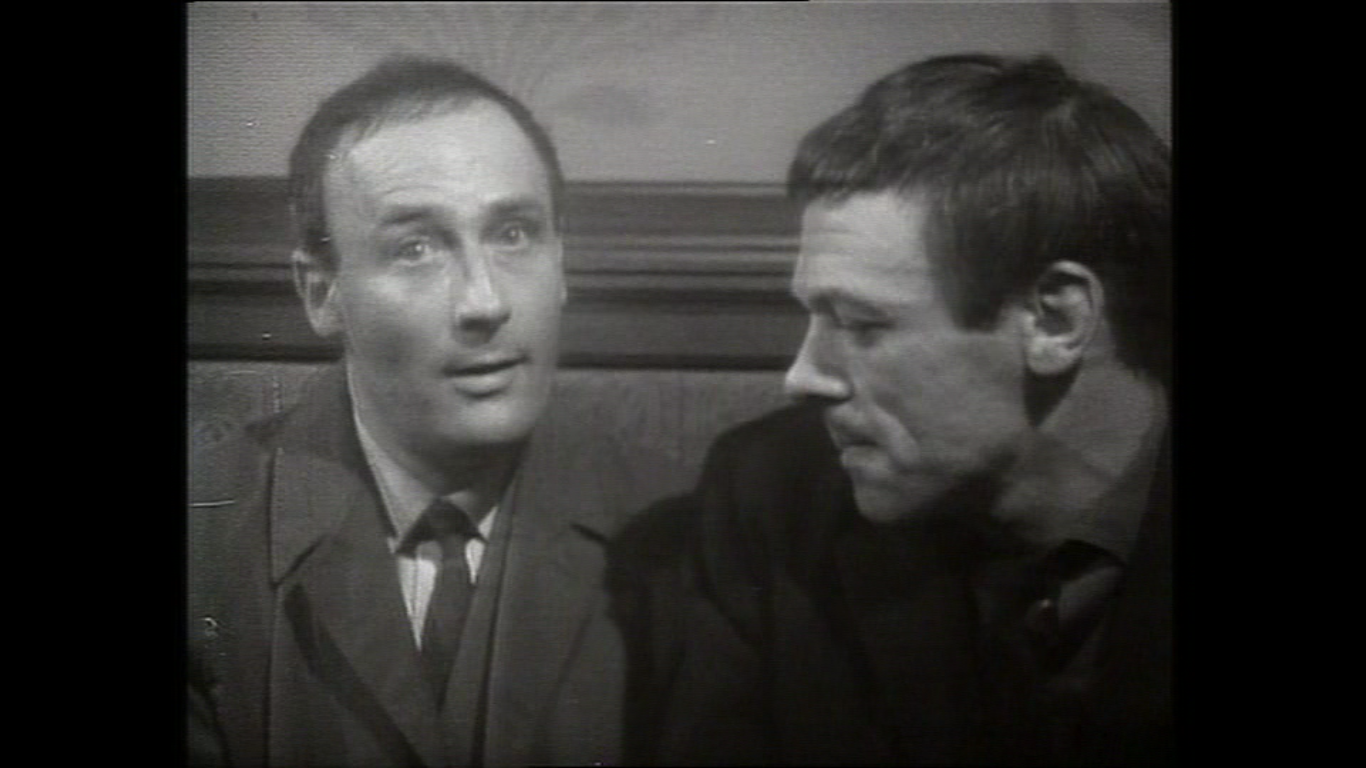 Edward Woodward had been working in theater and television when he was cast for the pilot. The character of David Callan (a pseudonym) is a former soldier, having served in Malaya and saved his CO's life. he was decorated for valor, but had an anti-authoritarian streak and got into fights with sergeants. After his service, he was a bank robber who got caught, then was pressed into service with The Section. Callan is an angry man, who has no control of his life, as he serves at Hunter's whims, doing the dirty work of the Section. He kills and frames people, destroys relationships and reputations, all on the orders of someone else, deserved or not. He hates his job but is too good at it to be let go. He's working class and isn't allowed to forget it. he is also a keen student of military history and a war games enthusiast, casting his own lead soldiers, as he rarely can afford to buy them. His tactical thinking is an element of the entire series, as he plans out his missions in intricate detail and shows the same brilliance when re-enacting famous battles. Ronald Radd initially played Hunter, which is the code name for the head of the Section. He uses Callan, same as his other agents. He is ruthless and a chess master, playing his men like pieces. Hunter is killed at the end of the second series and Callan is shot. The third series (first in color), features a new Hunter and Callan brought back to the job, to see if he still has "it." Also working for the Section is Toby meres, played by Anthony Valentine. He is a posh man, of middle class background, who has a ruthless, arrogant streak about him. he and Callan are rivals, though even he realizes Callan is better. Valentine would leave the role and his character would be replaced by agent James Cross, played by Patrick Mower, who is a young agent, also from the upper class, who is sadistic in his methods and hasa deep mistrust and jealousy of Callan. They are frequently at odds, while Toby meres was able to work with Callan. H Hunter's secretary, Liz, is probably the most knowledgeable of anyone in the Section, given the access she has to Hunter's files. She is polish and survived a massacre and was raised by a british intelligence officer, which led to her recruitment. She becomes a target, in one episode and also had an affair with Cross. She is friendly with Callan, though their relationship appears platonic. The other main character is Lonely, Callan's stooge and reluctant accomplice, played by Russel Hunter. Lonely is the only other person to appear through the entire series, played by the same actor. Lonely is a petty criminal, though a good source for information and acquiring things through dubious means. He also has a medical condition that causes a powerful odor when he is stressed out, which is usually, which gives him his name. Hunter plays him as a perpetually terrified victim of all he encounters. Callan bullies him into helping and makes his life miserable. He's a Cockney, but the actor, Hunter, is Scottish and brilliantly plays the accent. The series is brilliant drama and played to the strengths of Woodward's theatrical training. Liek many series of its era it was shot in a studio, on video, which gives it a stagey feel. Many episodes see Callan raging thunder at some injustice, some crime, some bureaucrat. Woodward stormed across tv screens, then dispatched villains with deadly aim. In the fourth and final series, Callan is caught by the Soviets and interrogated. he is exchanged for a Soviet spy; but is now exposed and cannot work in the field. this dilemma is solved by making him Hunter, a position he hates more than being Hunter's weapon. He is eventually relieved of his duties after an unauthorized return to the field. the final three episodes revolve around a Soviet agent, who defects. The series was popular and, as many successful tv series did, in the early 70s, spawned a movie version, which adapted "A Magnum for Schneider." 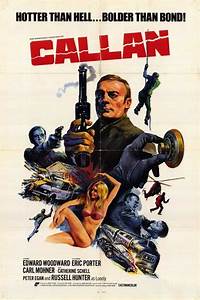 The film plays out like the original pilot; but, with exterior shooting and a larger scope, including scenes of speeding cars, relating to the finale. Woodward and Russell Hunter were the only tv actors to appear, as Eric Porter plays Hunter (the boss) and Peter Egan is Toby Meres. Future Darth Vader Dave Prowse appears as muscle for a Greek arms merchant (he also appeared in at least one of the tv episodes). The film is brutal and violent, particularly a scene where Callan kills the bodyguard and arms merchant, knowing they had planned to kill him. There is a scene of him mixing sand and water in a bowl, then punching his hands into it, creating a callus across the surface, to harden his hands (a karate training exercise). James Mitchell had adapted his original teleplay script into a novel, Red File for Callan and wrote the film script based on the novel's expansion of the plot. It shows great similarity to the Harry Palmer series, with its penchant for mind games, a reluctant, unsophisticated hero, and the dirty and tedious business of real spying. That would be it for Callan, for a bit. In 1981, Woodward and Hunter came back for a tv movie, titled Wet Job. Callan is retired and runs a military memorabilia shop and is in a relationship, with a woman he truly loves. A new Hunter comes along with one last job, though he is on his own. he tries to recruit Lonely, who now has his own business and is doing well, engaged to be married. he has the self-confidence to turn down Callan, though he does provide some support, in the end. Callan pulls off his mission and leaves it all behind for a life with his lady.  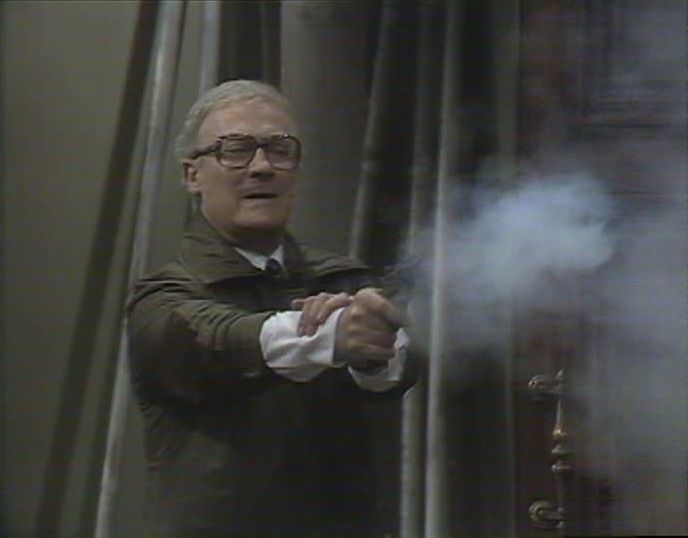 That would be it for Callan, apart from an odd piece of trivia. In the mid 70s, an ethnic Greek Cypriot, named Costas Georgiou, was recruited as a mercenary soldier, in Angola, using the name Col Tony Cullen. He was eventually captured by the Marxist government and put on trial. In the ensuing press, he was misidentified as Col. Callan and it was claimed that he took the name from the tv series. He was found guilty and executed. Callan is a tremendous series and makes for engaging viewing. Unlike American tv, it doesn't have the cinematic action; but, the writing and acting are top quality, with intriguing plots. Series 3 and 4, the two done in color, were released on DVD, in the US, by Acorn Media. The first series only exists in a partial form, as several episodes were wiped and are completely lost. Series 2 was missing a few episodes and is mostly intact. UK and Australian releases included all existing episodes and the reunion movie, Wet Job, while the film was released separately. Neither the film nor the first two series were released in the US. You can find "A Magnum for Schneider" and some of the black and white episodes on Youtube, plus the movie and Wet Job. I also found the color episodes of seasons 3 and 4. I highly recommend it. When you watch it, you may be reminded of another series with Edward Woodward, which would come out, in the US, in the 80s: The Equalizer. However; that is a subject for another time. Next, as promised, we hit the 70s, when spies were no longer in fashion, though Bond was still going (cracking jokes as he went). We will begin with something lighter, as we look at a series that blended spy-fi with sci-fi, as an astronaut becomes a secret agent. |
|
|
|
Post by codystarbuck on Oct 17, 2019 16:50:18 GMT -5
The spy boom of the 60s was spawned by Bond; but, especially Goldfinger. The most fertile period is from about 1965-67, with 1966 being the really big year. However, it burnt out quickly. Mission Impossible switched to dealing more with organized crime, while even Bond moved into dealing with fewer megalomaniacs. Real world events kind of overwhelmed the fantasy. The US was mired in Vietnam, where the CIA was being exposed in dirty dealings. Europe has lost remaining colonies in nasty conflicts, social or military. Politics gets dirtier and dirtier. Youth movements question the authority of governments and their actions (1968 was an explosive year around the world, with things like French students rioting and similar things elsewhere). As a result, spies aren't being seen as heroes. Spy movies are more thrillers, often dealing with political issues. I will explore a few of the more notable ones, in a bit; but, I want to hit one that tried to maintain a heroic tone and mostly succeeded. The whole thing starts in 1972, in a minor novel, where a former astronaut and test pilot is recruited to work for an intelligence agency and carry out special missions. This was an era of pulpy men's adventure paperbacks and this wasn't much different from the various Executioners, destroyers, Death Merchants, Killmongers and such. This was a sci-fi twist though, of which others had tried similar things. It wasn't even groundbreaking, as a pre-war French pulp series had covered similar ground. Okay, enough tease; I am, obviously, referring to the novel Cyborg, by Martin Caidin.  In that novel, former NASA astronaut and test pilot Col. Steve Austin crashes a test plane and is badly injured. Oscar Goldman, of the Office of Strategic Operations offers to funs Dr Rudy Wells experiments in bionics, to try to rebuild Austin into a whole body, with bionic prosthetics. They develop the limbs and perform the surgery. Austin is able to run further and do more, because his body uses less oxygen. the bionics give him mechanical advantages in strength and speed. His eye houses a camera, one finger has a dart gun built in. A rib houses a transmitter. They can attach special extras for special missions, like webbing for scuba infiltrations. Austin becomes a one-man commando squad and spy. As I say, this was hardly original. in 1911, French writer Jean de La Hire created a character, called the Nyctalope, who had mechanical prosthetics that gave him superhuman advantages, including artificial lungs, enhanced strength and speed. He fought mad scientists, criminals and enemies in a series of books that continued until 1940, with some being published in the 50s, after the war. de La Hire would court controversy, as he wrote a book praising the Nazis for their treatment of French war refugees (provided they weren't Jewish or Communists). The Nyctalope is considered one of the earliest literary superheroes, predating characters like The Shadow and Doc Savage by 20 years. The book was a bestseller and was optioned for a tv movie, in 1973, which Caidin co-wrote. The film mostly follows the novel, with Austin crashing a lifting body craft, barely surviving and multiple amputations. Oliver Spencer, head of the OSO, commissions Dr Rudy Wells to develop his proposed bionic prosthetics to rebuild Austin. The film features Austin's negative reaction to being turned into a Frankenstein monster, and eventual acceptance. he is then sent on a special mission, in the Middle East. 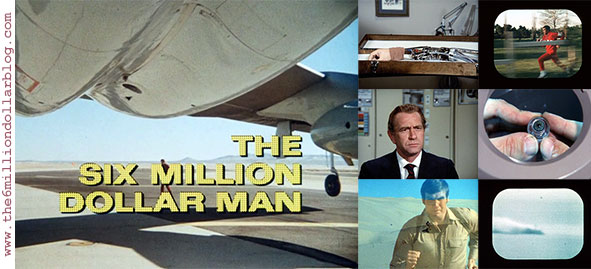 The movie did very well in the ratings and still holds up fairly well. it is a bit darker and more cynical than the subsequent tv series, as Steve is looking to die, at first. Oliver Spencer is a darker character who will use Austin because it suits his purposes. In the film, they use a medically induced coma to operate on Steve and keep him alive, while they develop the prosthetics. Spencer actually makes the suggestion of keeping him this way, between missions, which horrifies Rudy. Shades of the Winter Soldier (where do you think Brubaker probably got the idea?). Spencer is a pragmatist and a rather nasty individual, brilliantly played by Darren McGavin. Martin Balsam is Rudy Wells, who is the flight surgeon for the test flight, even before bionics come into things. Lee Majors plays it very much like a Gary Cooper/Chuck Yeager type; cool, level-headed and professional. This was probably a more realistic depiction of both astronauts and career military professionals, rather than the gung-ho heroics of the pre-Vietnam era, or the cynical war mongers of post-Vietnam. It was a rare portrayal. The success of the film led to a commission for 2 more films. The first of these is the most obviously espionage-themed. It starts out with Austin in a tux, leaving behind a pretty lady to then rendezvous with a submarine, off the coast. he eventually has to track down a stolen Polaris missile to a Caribbean island, where it is in the hands of an arms dealer. He sabotages the installation and destroys it with a nuke, despite being near a populated area! 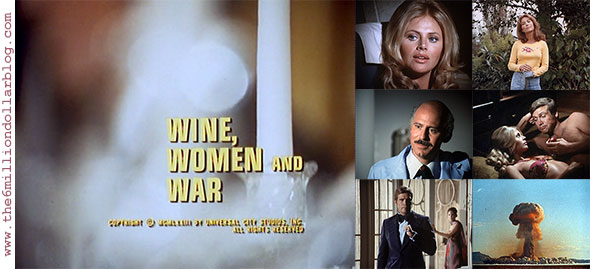 The film has Steve playing a more Bond-like character, with tuxedos, romancing women, and a bit of alcohol. Majors tries to play it sophisticated; but, budget and his Kentucky accent interfere and it just doesn't come off. However, the basic plot is good and they are honing the bionic stunts. Richard Anderson joins as Oscar Goldman, head of the Office of Scientific Intelligence (OSI, later Investigation) and Alan Oppenheimer (voice of Skeletor) takes over as Rudy Wells. Dusty Springfield sings a rather horrid theme song (sounds like a bad Las Vegas number, from the era). This is the 70s and it is tv, so fashions aren't quite up to Bond levels. It's hard to look sophisticated when your tuxedo looks like it was made out of Bob & Emily Hartley's bedspread...   Eric Braeden is good as the villain, while Britt Ekland (not yet a Bond Girl) adds some sex appeal, as a Russian agent. The Man From UNCLE's David McCallum plays another Russian agent, while Earl Holliman (Police Woman) is an old buddy of Steve's. Decent movie, with plenty of intrigue and some romancing. It's definitely aimed at an older audience than the tv series. This was quickly followed by the third movie, The Solid Gold Kidnapping... 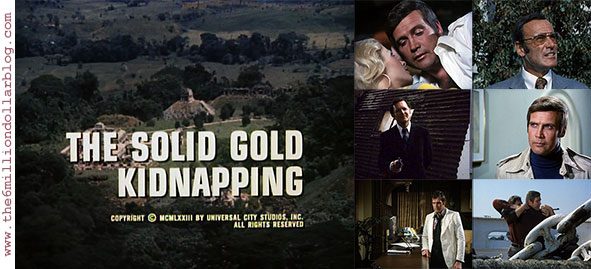 Here, the OSI stage a fake kidnapping to get a diplomat to China, for negotiations; but, he ends up kidnapped by an international criminal group, led by Maurice Evans. Thunderball's Luciana Paluzzi is also here, as is a younger James B Sikking (Hill Street Blues). John Vernon (Animal House and voice of Iron Man, in the Marvel Superheroes cartoons)plays an operative of the criminal group. This was a transitional film, as the womanizing and the jokes are cut down and the structure is more like the tv series. Here is a promo for a 1975 rebroadcast, with clips from the latter two films (and a couple from the original film)... The success of the movies led to the tv series being greenlit and we entered classic television territory, as each week, Steve Austin deals with a strange occurrence, a criminal act or someone in trouble. The classic opening debuts, giving us the backstory to Steve's accident, with the narration of Oscar Goldman... The early episodes stuck to the espionage format, though we also got a heavy dose of science fiction. that element became stronger as the series progressed, leading to aliens, bionic Biggfoot, androids, haywire Venus probes and more. Criminal conspiracies were a favorite and when all else failed, good people in a bad situation, who need Steve's help. This allowed the series to cover a wider territory. It was an early prime time slot, so it was kept relatively clean, with more implied romance than actual. That is, until the introduction of former love interest Jamie Sommers. Steve and Jamie rekindle their love affair and get engaged. then a skydiving accident nearly kills Jamie and Steve pressures Oscar and Rudy to use bionics to save Jamie. She trains to become an agent, but there are rejection problems with her bionics and she dies. However, the audience wanted her back and they concocted an out, bringing her back. She was then spun off into a sister show, where she has a cover as a schoolteacher, while carrying out missions for the OSI. Crossovers were created to bring them together. Eventually, the series came to an end (5 seasons of Austin, 3 for Jamie). However, it had a long life in syndication and cable. That led to reunion movies, which were potential pilots for a revived series. The first, The Return of the Six Million Dollar Man and the Bionic Woman (whew...) featured a new Bionic Man, Steve's son, who is injured in a plane crash. Jamie helps him through rehab and training. He is then tasked with a mission to defeat a criminal group, Fortress, which requires all 3 bionic agents to accomplish.  The second film, Bionic Showdown: TSMDM and TBW, features another new agent, Kate Mason (Sandra Bullock) who is sent out on her first mission, with Steve and Jamie. Steve also pops the question to Jamie.  The third film, Bionic Ever After, is the wish fulfillment marriage of Steve and Jamie. Jamie suffers malfunctions and the collapse of her systems, which turns out to be a computer virus. Rudy fixes it and gives her enhanced night vision, to boot. Steve and Jamie kick ass and get married and fans wet themselves in excitement. The End. The first film is a full on reunion, with Steve's son as a way to bring the ex-lovers together. Jamie now works for OSI as a counselor and semi-retired field agent. Steve is retired and living on a boat. The second film was a backdoor pilot for a new Bionic Woman series, with Bullock set to star. However, she got bigger offers and a series didn't follow. The third was to wrap up the romantic subplot, reintroduced int he first reunion film. These came about because the Bionic Woman was owned by Universal and the Six Million Dollar Man name was also, though Martin Caidin owned the character of Steve Austin. He was fine with these films. Later, Universal decided to revive the Bionic Woman, while repeated attempts to put together a Six Million Dollar Man film have failed (comedic and serious). The revived Bionic Woman, with Michelle ryan as Jamie, premiered in 2007 The pilot had good reviews and features Katie Sackhoff as the first bionic woman, who helps the new one. She returned for further episodes. Reviews of the subsequent series were not good and the LA Times critic even lamented that he wished Sackhoff was the star. It was felt that it tried too hard to appeal to young males and lost the female audience. others also pointed to the casting, as Michelle Ryan was found to be less aggressive and not engaging as the hero, with Sackhoff again praised as the more clearly engaging character. the series went through production changes and was halted, mid-run, by a WGA strike. Only 8 episodes aired before the axe fell. The original series was adapted into novels (an original sequel, then adaptations of episodes) and a comic series from Charlton, both as a magazine and a standard color comic, with Joe Staton art. the magazine was generally praised more, as it had initial involvement from Neal Adams' Continuity, before they proved too expensive. The later era saw Dynamite publish Kevin Smith's unproduced movie screenplay and additional comics. Rob Liefeld's Maximum Press, in 1996, announced a new Bionix series, that was supposed to be an updating of the shows; but, it was never published. A similar fate befell Liefeld's THUNDER Agents announcement. Either Liefeld was premature or the license holder shot things down (or he never had the rights). While not exactly a spy series, The Six Million Dollar Man and The Bionic Woman had enough elements to qualify, in my book. Other specialized agents followed (some as potential spin-offs), including a Seven Million Dollar Man, a Bionic Boy, a girl with ESP, and a man who can have technical knowledge implanted into his brain, via computer. It blended science fiction elements with traditional spy elements, plus the Fugitive format, where the main character goes around helping people in trouble, minus the angle of being pursued. This was a common feature of many adventure series in the mid-70s, especially sci-fi series (Logan's Run, The Phoenix, Otherworld, Planet of the Apes, etc...) Now, we leave behind the goody two-shoe spies for more cynical spy thrillers, where innocents are caught up in spy games. Our first is Three Days of the Condor, with robert Redford, Faye Dunaway, Max Von Sydow, and Cliff Robertson. Come on back for a book reader on the run and the world's friendliest assassin. |
|
|
|
Post by codystarbuck on Oct 17, 2019 16:53:37 GMT -5
ps, for those who wanted to see it... 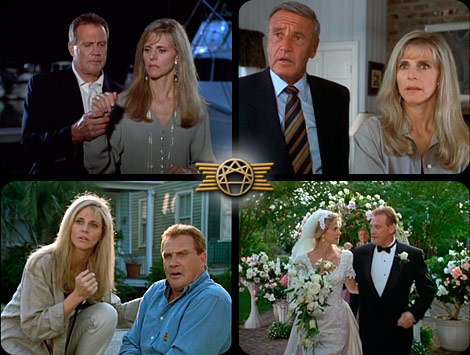 I don't mind the whole wedding thing, as long as no one let's Lee Majors sing that awful song again, from the original Bionic Woman two-parter! |
|
|
|
Post by Deleted on Oct 18, 2019 2:08:30 GMT -5
I'm a huge SIX MILLION DOLLAR MAN and the BIONIC WOMAN ... Enough Said and always a fan of Lee Majors and Lindsay Wagner ... I just love Maximillion, the Bionic Dog!  |
|
|
|
Post by brutalis on Oct 18, 2019 8:11:09 GMT -5
I really like those 1st 2 six Million Dollar Man movies and enjoyed the more adult/sophisticated espionage aspects of them. I have several of the Caidin books and they hold up quite well for re-reading. Imagine if you would just how much cooler Steve Austin would be if a movie was made now which encapsulated the serious/darker motif and went away from the formulaic "super-hero" aspect. Keeping to more realistic and "bloody" in respect to being hit by somebody with a Bionic arm or leg (just how in the hell does he manage to NOT hurt/maim/kill when striking folks by mentally "pulling his punches"?) and just like the in the 1st season of Doom Patrol when Robotman goes into action for the 1st time. In a fight and every punch, kick and block rips and rends and turns the opponent into a bloody pulp. Austin with his Bionic arm/legs and eyes would be a damn near unstoppable super sleuth and imagine the "fear" that enemy agents would be spreading about the rumors: Ivan says he saw a guy last night in the shadows punching through a wall. Ivan punched the enemy agent and bruised his fist as proof and then knocked the guy off the sixth floor balcony and the guy landed on his feet and ran away faster than a car. Does anybody know whatever brand of Vodka Ivan was drinking last night? Cuz I sure want a bottle of my own!!!
|
|
|
|
Post by codystarbuck on Oct 18, 2019 11:32:22 GMT -5
I'm a huge SIX MILLION DOLLAR MAN and the BIONIC WOMAN ... Enough Said and always a fan of Lee Majors and Lindsay Wagner ... I just love Maximillion, the Bionic Dog!  I forgot Max, but, I really kind of stopped watching the Bionic Woman, by season 3. If memory serves, they were actually pushing for a Bionic Boy series; but decided against it. |
|
|
|
Post by Deleted on Oct 18, 2019 11:42:29 GMT -5
I'm a huge SIX MILLION DOLLAR MAN and the BIONIC WOMAN ... Enough Said and always a fan of Lee Majors and Lindsay Wagner ... I just love Maximillion, the Bionic Dog!  I forgot Max, but, I really kind of stopped watching the Bionic Woman, by season 3. If memory serves, they were actually pushing for a Bionic Boy series; but decided against it. I heard that too and they almost did and ... that's would be overkill on their part. |
|
|
|
Post by codystarbuck on Oct 18, 2019 12:34:58 GMT -5
I had it in my head that the Bionic Boy episode pre-dated Jamie; but a quick look shows it was well after she had her own series. So, yeah, that would have been too much. I also doubt they could have come up with many interesting plots for a character that young. I know I wouldn't have been able to take Vincent Van Patten on a weekly basis. It was hard enough in The Master, when he was older. He turned out to be va really good director, though.
|
|
|
|
Post by codystarbuck on Oct 19, 2019 22:00:43 GMT -5
In the fallout of Vietnam and the CIA's litany of dirty tricks exposed in the media, spy became a dirty word. No longer did we see heroic secret agents defending the world's freedom, apart from James Bond, and he was dealing more with petty criminal bosses than with the Russians or SPECTRE. He was about the only exception, though he wasn't the phenomena that he once was. Spy films became more of the Harry Palmer variety: realistic, downbeat, dirty business, often pulling in innocents. Who did you trust? Who could you trust. Into this paranoia came a masterful thriller, with a pretty boy lead.... Three Days of the Condor was based on the novel, 6 Days of the Condor (they could only cover three days, in 2 hours.  ), by James Grady. The book was published in 1974 and the basic plot was the same as the film; but motivations were different. in the novel, Condor stumbled across a drug smuggling operation, coming out of Laos (Vietnam was winding down, but still going). The film goes on a vastly different tangent. Grady wrote 3 sequels: Shadow of the Condor, Last days of the Condor, Next Day of the Condor. Grady had worked for Sen Lee Metcalf, of Montana, when he was in college, then worked as a journalist, in Washington, under Jack Anderson. In a later edition of the novel, he wrote that he was inspired by a building he used to walk past, that had a brass plaque, with the name of some innocuous academic or or historical group. he got to daydreaming and wondered, "What if that was a front for the CIA?" So he concocted the story. Sydney Pollock would direct and Robert Redford stars. He is Joe Turner, code name Condor, a researcher for a CIA department, based in New York. Their cover is The American Literary Historical Society. His job and those of his colleagues is to read books, mainly mysteries and spy thrillers and record the plots, noting odd elements, hidden meanings and general information that might be useful. Turner has been working on a book that doesn't sell well, isn't particularly well written, yet has been translated into several languages. he files a report on the books and is awaiting a response. he ducks out of a back door of the building to a nearby deli, to pick up lunch, for the group. While he is away, armed men enter the building and kill everyone inside. Turner returns through the back door and finds the bodies, including a woman with whom he had a relationship. he is stunned and horrified and flees the building. he gets to a pay phone and calls CIA HQ, in Langley, VA. After identifying himself, he tells them that everyone is dead. He is told they will contact him back. His section chief is going to bring him in, though he has never met him. Turner is directed to a rendezvous point, but notices something odd about the man's behavior. he narrowly misses being shot and fires back with a Colt 1911 he had taken from a desk drawer, at the Society. He ends up taking a woman (Faye Dunaway) hostage, and hides out in her apartment. He tries to rest and gather himself together and work out the mystery. He uses his skills and information he has picked up over the years to unravel the mystery, eventually confronting the Deputy Director with what he has learned, only to find out that the truth of why the group was hit is not that the enemy found them. The film is a tremendous thriller, with redford proving he was more than just a handsome leading man (not that he hadn't already been doing that). Turner is a very smart man, with the standard two years military service, in the Signal Corps, work at Bell Labs, and a head for retaining information he read and being able to think laterally. He is unpredictable, which keeps the other side guessing. Faye Dunaway plays the woman he takes hostage, though he tries to convince her that he is in danger. She is terrified, at first, then sympathetic, but thinks Turner is mentally imbalanced. However, when Turner is located and a hitman, disguised as a mailman nearly kills them in her apartment, she knows he is telling the truth. He locates the leader of the assassins (Max Von Sydow), and, the person who ordered the hit. Sides are shifting, groups are acting independently and loyalties are shifting. It is pure paranoia, dirt business, and deduction. The acting in this is amazing, from everyone. it's filled with great character actors and leads. The scenes are riveting, like this one between Redford and Sydow, after Turner confront the man who ordered the attack, but finds that Sydow has killed him... Turner and Kathy Hale (Dunaway) are kidnapper and hostage, then almost therapist and patient, then lovers and friends. It progresses slowly and realistically. Kathy was supposed to go on a ski weekend, with a man she doesn't really love and their relationship is already failing. She is already vulnerable. He interrupts her life, but also saves her from emotional turmoil. She ends up aiding him, before he sends her on, for her own safety. Cliff Robertson is the man trying to sort the mess out. He didn't order the hit; but, in the end, he knows the reasons why it occurred. he and Turner have a confrontation and the truth comes out. It's a dark truth, that sickens Turner. Turner is smart, though, and doesn't trust anyone at the CIA. He takes steps that ensure his safety. At the time, the reasoning for the exercise seemed ridiculous, far-fetched. In hindsight, it was all too real and foreshadowing. The films was a hit and inspired other paranoid thrillers and copycats. One of its biggest legacies, for this board, was in informing the approach that the Russo Brothers took for Captain America: The Winter Soldier. We see the same kind of duplicity, the cat and mouse games, the hero on the run, hiding out, reluctant allies, enemies within, etc. We also see Redford as the man in the center of things, playing the bad guy, for a change. This was one of the truly great films of the 70s, a decade where a lot of really tremendous, serious stuff was created, by a new generation of Hollywood. New film techniques, new stories, new character types. Sydney Pollock was one of these new Hollywood, an actor and director, who specialized in character dramas, and who had a long association with Redford, directing him in Jeremiah Johnson, this film, The Electric Horseman, The Way We Were, and Out of Africa. Next up, a history student and a runner has a rough day at the dentist. |
|
|
|
Post by codystarbuck on Oct 20, 2019 20:01:39 GMT -5
So, what do Laurence Olivier and Roger Corman have in common?
Dentists!
In 1973, novelist and screenwriter William Goldman (Butch cassidy, All The Presidents men, The Princess Bride) wrote a novel about a Nazi war criminal, who comes to New York to retrieve a cache of diamonds. He had originally intended it to be Josef Mengele, coming to the US for medical car; but, didn't want a villain who was frail and weak. He considered the stories of how the Nazis took gold teeth and past visits to the dentist and made his Nazi a dentist. The basic plot has an SS dentist, from Auschwitz, Christian Szell, who is in Paraguay. he lives off diamonds stolen during the war and sold and money transferred by a government agency, known as "The Division," in exchange for info about other Nazis. Szell comes to New York to claim his diamonds and the brother of a courier, Thomas "Babe" Levy finds himself caught up in a web of lies, betrayal and extreme danger.
Goldman sold the film rights for $500,000, before the novel was published. Robert Evans bought it and considered it a sound investment. Goldman wrote the screenplay and John Schlesinger directed. Laurence Olivier was cast to play Szell; but, had medical issues and it looked like he would bow out. Richard Widmark came close to playing the part; but, Olivier recovered and played the role. Dustin Hoffman, who was a rising star, was cast as Babe, while Roy Scheider was his brother, Doc, who is the courier for the government agency, masquerading as an oil executive. William Devane is Peter Janeway, head of the agency. Marthe Keller plays Elsa Oppel, Babe's new girlfriend.
Doc visits his brother, a history PHD student and marathon runner, whose father committed suicide, during the McCarthy Era, when he was branded a communist. Babe's dissertation seeks to exonerate his father. Szell's brother is handling his affairs in the US and he is killed in a traffic accident, causing Szell to come to the US. he no longer trusts his masters and orders the deaths of his diamond couriers, including Doc. Doc escapes an attempt and assumes Szell is headed for New York and concocts a visit to his brother. he meets Babe's new girlfriend, Elsa. The couple had been mugged by men in suits, though they escaped. At dinner, oc tricks Elsa into revealing that she is not who she says. Doc later meets Szell, who stabs him with a hidden flick knife. Babe is questioned by the police until Janeway intercedes. he reveals Doc's profession and questions what he told Babe. babe denies any knowledge, though Janeway feels Doc's attempts to get to babe's apartment, while wounded, suggest other wise.
Babe is abducted and brought to Szell, who asks "Is it safe?" then proceeds to torture him with dental instruments. Babe eventually escapes and flees his captors due to his marathon conditioning and training. Janeway is revealed to be a double agent and Babe eventually manipulates a meeting with Szell.
The film is a further example of the paranoid espionage/political thriller, with Nazi atrocities and Right Wing American politics at the center. Nazi war criminals who escaped to South America became a major source of speculation, especially after the capture of Adolf Eichmann, by agents of the Israeli MOSSAD (dramatized in the film, Operation Eichmann, with Hogan's Heroes co-star Werner Klemperer). Media stories of figures like Mengele and Martin Boarman abounded, becoming fodder for thriller novels and films, including things like Frederick Forsyth's The ODESSA File, Ira Levin's The Boys From Brazil and similar fare.
Escaped Nazis were nothing new for spy thrillers, as Nazis were favorite villains in 60s spy and adventure tv series and movies. The OSS 117 spoofs include escaped Nazis as the villains. The Nazis were used as a source of post-war anti-Soviet intelligence and many criminals were protected by Allied governments, either because of scientific expertise (such as Werner Von Braun, who was an SS officer) or military expertise, such as Franz Halder, a German general, who worked with the US Army Historical Division, whitewashing Wehrmacht atrocities in the Russian front, as well as advising and providing intel on the Soviets.
The film plays on the paranoia aspects, as babe is caught up in webs of deceit, starting with those who persecuted his father, his brother's profession, his girlfriend and those he encounters. He is a student of history and has seen how politics can shape how history as told, making or remaking reality. Meanwhile, he is a long distance runner, used to being on his own, enduring pain and fatigue and tapping inner reserves. This benefits him when undergoing torture, then when he escapes.
The film is also notorious for a clash in approaches between its two stars. Olivier was a product of British theatrical training, the greatest graduate of that training and considered to be the finest stage actor of all time (arguably). Hoffman was a Method actor and his approach to this was to stay up long hours to make him tired and anxious, giving himself a fatigued look. He worked out heavily to perform the running scenes and is in great shape, for the film. However, the stress of production and his living his character caused issues in filming scenes. Legend has it that he was having trouble with a take and Olivier quipped, "Why don't you just try acting?" Stories were numerous of clashes between the two, yet the final product bears out that the approaches of each actor worked for them and made the film great.
The audience is left in the dark throughout and learns as Babe does. We don't know who to trust, we are horrified by the cold demeanor of Szell and the mercenary nature of Janeway. There are no white hats to be found, though babe is at least an innocent.
The film was a success and furthered the copying its ideas of Nazi war criminals and conspiracies. Following on its heels was The Boys From Brazil, while Forsyth beat them to the punch, with ODESSA File being filmed in 1974. Neither are what I would call spy films, as ODESSA is about an investigative journalist, researching the link between a Jewish man who commits suicide and former SS officers. It does involve the MOSSAD, as they help the hero infiltrate the ODESSA organization. Meanwhile, Boys From Brazil is a conspiracy thriller, about a fugitive Josef Mengele, who has cloned Hitler, and placed the babies in families with similar backgrounds to Hitler's parents and is orchestrating the murder of the fathers, to recreate the events of Hitler's youth, to create a new fuhrer. A Simon Wiesenthal stand in (played by Olivier, in the film) and a young Jewish man investigate, after a tape recording is made. The film builds to a confrontation between Mengele (Gregory Peck) and the Nazi Hunter (Olivier) in America, at the home of one of the clones.
The 70s would also feature other political conspiracy thrillers, which often traded in the same mechanics as spy thrillers, which themselves drew on mystery novels and plots. This would be more of the formula throughout the 70s, with also the addition of horror films, built around secret conspiracies, such as The Omen.
Next, we look at real spy drama, created by a real spy. We start in the 60s and then progress into the 70s and 80s, before jumping forward to the New Millennium. Come on back as we take a look at George Smiley and creator John Le Carre.
|
|
|
|
Post by codystarbuck on Oct 22, 2019 1:37:20 GMT -5
In 1931, in Poole, Dorset, David John Moore Cornwell was born, to Ronald Cornwell and Olive Moore Cornwell. His father was a confidence trickster, jailed for insurance fraud and an associate of the notorious Kray Brothers. His mother abandoned him when he was five. He went to English Public Schools, including Sherborne, which he hated and eventually withdrew. He studied languages at the University of Bern, in Switzerland then served in the Intelligence Corps of the British Army, in 1950, serving in Austria. His job was to act as an interrogator of people who came across the Iron Curtain. After leaving the Army, he attended Oxford, where he was noticed by some important people; not for academics, but for skills and attributes that had special uses. He was recruited into MI-5, running agents, arranging break-ins and keeping tabs on persons of interest. In 1960, he transferred to MI-6 and was posted to Bonn, West Germany; anf, later, to Frankfurt. In 1961, he decided to write a novel and it was published, though Cornwell wa required to use a pseudonym. He would write two more novels, before leaving the service to write, full time. The name he chose to write under, while still working as a spy was John Le Carre. His first novel was Call for the Dead, and it featured one George Smiley. 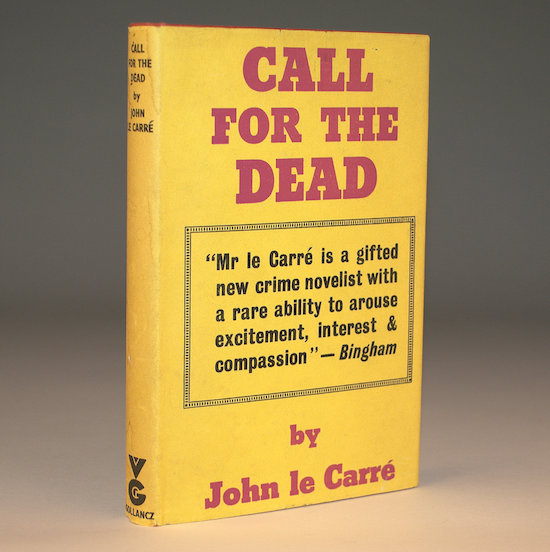 James Bond was tall, athletic, handsome, with a scar and a cruel mouth. He was suave and debonair and ruthless. george Smiley is middle aged, balding, short, overweight, rumpled, studious, unassuming, reserved, and quiet. He dresses poorly, in ill-fitting suits, produced by tailors who took advantage of him. He wears thick glasses, which he routinely polishes with the end of his necktie. Not exactly a man of action and glamor. In his first two appearances, Smiley is more of a detective than a spy. Call For the Dead has him investigating the suicide of a civil servant, who Smiley had investigated after an allegation and had cleared him. He eventually uncovers that he was an agent for an East German handler, Hans Dieter Mundt and that his wife Elsa was an unwilling accomplice. Smiley learns that Elsa is actually the spy and that the civil servant had been passing on insignificant material. he anonymously accused himself, to obtain a meeting with security to pass on his suspicions about his wife and Mundt, but was murdered by Mundt. The novel was adapted into a film, The Deadly Affair, starring James Mason; but Smiley was changed to a character named Charles Dobbs, as the Smiley name was tied up in the option for Le Carre's 3r book. The film was directed by Sydney Lumet, with Harry Andrews, Maximilian Schell, and Simone Signoret co=-starring. The film largely follows the plot of the novel.  Smiley is much like Lt Columbo (who was inspired by Dostoyevsky's Porfiry Petrovich, from Crime And Punishment) in that it is his dogged research, questioning, piecing together of events, statements, things unsaid, researches and other facts into a clear picture. He is dogged intelligence and determination, a brilliant mind in an unimpressive body. The next novel was A Murder of Quality, which finds Smiley investigating the murder of the wife of a public school instructor, who had written a letter to a Christian magazine, fearing for her life. A colleague of Smiley's asks for his help. He eventually learns that the woman had been blackmailing another instructor over a homosexual charge, while he was in the RAF. Again, this was turned into a film, but not until 1991, by Thames Television, with Denholm Eliot as Smiley (this time named)... The film also featured Joss Ackland, Glenda Jackson, and a young Christian Bale. Again, Smiley acts as a detective, rather than a spy. This would change with Smiley's third appearance, which would be Le carre's biggest hit of his earliest novels and would spawn a landmark film> The Spy Who Came in From the Cold. 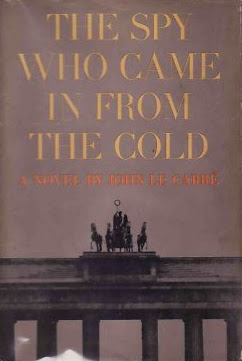 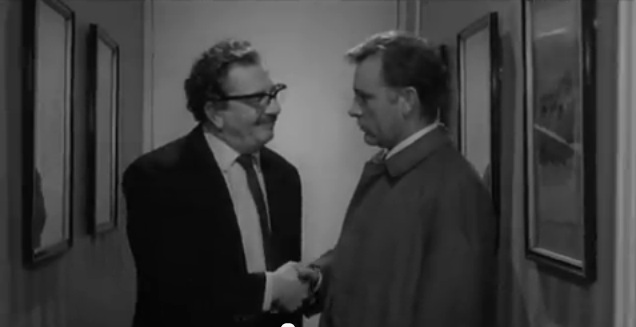 Richard Burton is Alec lemas, Section head for "The Circus" in West Berlin. he waits for an agent to make the crossing over the border, only to see him gunned down. he is recalled to London and eventually dismissed from the service, as he descends into alcoholism. he obtains a job working in a library, where he meets Nan Perry,a young idealistic woman and a Communist. They develop a relationship and Lemas is introduced to important people in the party. He eventually defects and is brought into East Germany, from the Netherlands. There, he is interrogated by Fielding. Fielding has his own agenda, as he believes his superior, Hans Dieter Mundt was a double agent for the British. lemas doesn't believe this and said he would have known. Mundt is put on trial, with Lemas as a witness. Meanwhile, Nan also turns up in Germany, and is a witness against Lemas. It climaxes with Nan and Lemas trying to escape across the wall. The film was produced and directed by Martin Ritt and is a powerful visual film, as well as a great character drama. Burton commands the screen and gives Lemas the cynical, world-weary look that is needed. he has seen too many agents die, has stopped believing in causes, theirs or his. He is an angry drunk, an outcast of society. Claire Bloom is the young idealist, Nan, who finds herself drawn to Lemas, as if he is a lost and hurt puppy. She takes him to her bed and it seems clear that she is woefully naive. Oskar Werner is Mundt, the enemy that Lemas has been picked to destroy, as Fielding builds his case that Mundt is a British agent. Peter Van Eyck is Fielding, who seeks to build his own position, at the expense of Mundt. Mundt turns the tables on him. Cyril Cusack is Control, head of the Circus and Rupert davies is Smiley, his right hand man. Also appearing are Michael Hordern, Bernard Lee, and Sam Wanamaker. Look at these visuals, from the film... Smiley has only a small role in both the book and the film, as it mostly centers around Lemas. He acts as Control's eyes and ears and puts certain events in motion, as well as devises plans within plans. This was one of the first films to deal with real espionage operations, not glammed up spy thrillers of action/adventure films. It is cold and cynical, as you would expect. The Criterion Edition of the film is a tremendous collection of material and I highly recommend it. This is even more anti-Bond than Harry Palmer. Heck, Palmer is a jet setter, compared to Smiley and Lemas. Smiley would return in a small role, in The Looking Glass War, where another intelligence department sets up an unnecessary operation, which crosses Smiley's path and falls apart. le Carre was partially moyivated to write it because of the press form Spy Who Came in From the Cold, which many British saw as a heroic story. Le Carre wanted to satirize the romantic portrayal of spies with a bumbling operation that ends tragically to dispel such notions. The novel was adapted into a film, in 1969; but, Smiley was excised from the story. Smiley would return, in the 70s, in the Kalra trilogy: Tinker, Tailor, Soldier, Spy; The Honorable Schoolboy and Smiley's People. All three revolve around Smiley's opposite number, in the KGB, code named Karla, a spy master who placed a mole deep inside the Circus. Smiley has to uncover the mole, in TTSS. Honorable Schoolboy revolves around an operation to help rehabilitate the Circus, under Smiley's direction, then Smiley's People deals with the death of a former asset and a possible chance to get to Karla. The trilogy was a huge success and would lead to a pair of tremendous tv adaptations, as mini-series. We will start with Tinker, Tailor, Soldier Spy, where Alec Guinness portrays George Smiley... TTSS finds Circus agent Jim Prideaux sent to Czechoslovakia to meet with a Czech general. He has info related to the identity of a mole, within the Circus; someone near the top. There are four suspects, code named Tinker, Tailor, Soldier and Spy. Prideaux only has to broadcast the code name to identify the person. He travels to Czechoslovakia and is blown and captured, after being shot. Control is disgraced and soon forced to retire, as cancer is killing him. George Smiley has retired to academic life and exile. The Circus is being run by a committee of Percy Alleline (the Chief and organizer/political muscle of the group), Toby Esterhase, who runs the Lamplighters, who conduct surveillance and carry messages; Roy Bland (economics expert), and Bill Haydon, the number 2 and a good friend of Prideaux. Prideaux is eventually exchanged and ends up as a teacher at an English public school. Smiley is pulled back in by Charles Lacon, Permanent Secretary of the Cabinet Office, who has a stunning revelation. An agent, named Ricki Tarr, has brought a story of a mole at the top of the Circus. Tarr was a "scalphunter," one of the dirty tricks agents, working for Peter Guillam, who brings Smiley to see Lacon and Tarr. This sets in motion a secret investigation to uncover the identity of the mole. The mini-series stars Alec Guinness and is filled with the best of British television and theater, with Alexander Knox (Control), Anthony Bate (Lacon), Bernard Hepton (Esterhase), Ian Richardson (Haydon), Ian Bannen (Prideaux, Beryl Reid (Connie Sachs), Terrance Rigby (Bland), Hywel Bennett (Tarr) and Sian Phillips (Ann Smiley). By Olivier, the acting in this is awe-inspiring! Guinness captures the mundaneness of Smiley, the cool intellect, and the disarming manner. He is effortless calm, almost submissive in appearance; but he has a keen brain and is a natural leader. He finds the threads that unravel the mystery, eventually uncovering the mole, which leads to other consequences. It is a cat and mouse game, with extremely high stakes, demonstrating institutional arrogance, blind ambition, deceit, betrayal and all of the worst, darkest elements of human nature. By the end, you almost feel sorry for the mole, as, despite his cynical exterior, he actually was a believer. Le Carre consulted with the production and introduced Guinness to his old boss, after he asked to meet a spy. he adopted a few mannerisms from him. Le Carre has said Smiley was based on the Chaplain at Sherborne, Vivian HH Green and his boss at MI-5, Lord Clanmorris (who also wrote novels, under the name John Bingham). Patrick Stewart portrays Karla, in a flashback scene, where he had been captured, in India, where Smiley tries to get him to defect, now that he has been exposed and would likely face execution, at home. Instead, Karla survives and prospers, which, unknown to Smiley, sets in motion the use of the mole to get to Smiley and neutralize him, which succeeds, for a time. This is just a brilliant series and a must-see for spy thriller fans or lovers of good drama or great television. The inspiration for the plot was the uncovering of Kim Philby, the British double agent who defected to the Soviets and was part of the Cambridge 5 (Guy Burgess, Donald MacLean, Anthony Blunt, John Cairncross and Kim Philby), all intelligence officers who were recruited by the KGB. In fact, Philby was responsible for blowing Le carre's cover, in West Germany.   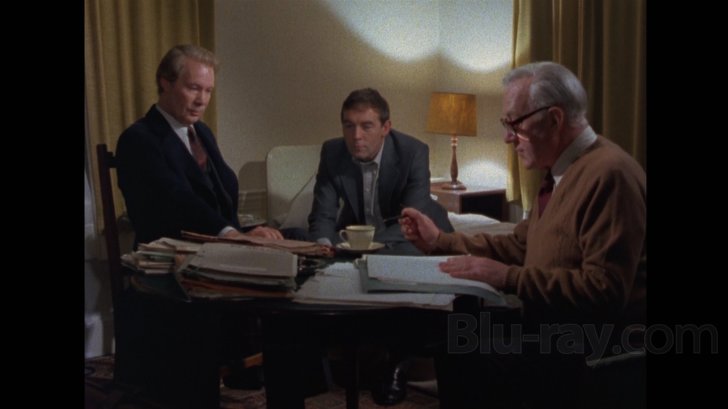 The opening titles of eachepisode feature a series of Russian nesting dolls, with different expressions, culminating in a faceless one, at the center, visualizing the quest to uncover the identity of the mole. 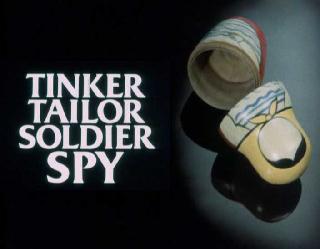 The mini-series was a big hit and a sequel would follow. however, the Asian setting of The Honorable Schoolboy is ruled too expensive, so they charged ahead with the end of the Karla Trilogy, Smiley's People. Smiley is again retired, having turned the Circus over to new hands. He is pulled back when an old agent, a Russian general, is found murdered in a park, after making contact to arrange a meeting, under "Moscow Rules." His contact was initiated by a letter from a Russian ex-patriot, Maria Ostrakova. She lives in Paris and is approached by a vile toad of a man, Oleg Kirov, who says her daughter, Alexandra may be permitted to leave the Soviet Union, if Madame Ostrakova follows his instructions. She becomes suspicious and contacts the old general, who runs an unofficial group. meanwhile, an attempt is made on her life, but she survives. The general dispatches a man, Otto Leipzig to meet Ostrakova. Smiley investigates the murder and learns of the general's actions and follows the trail, eventually leading to Ostrakova, as well as West germany, where a photo and some videos brings about an opportunity to get to Karla. Smiley learns of a daughter, who is ata Swiss mental hospital and arranges to set up a sting for the courier, to force Karla to defect. Once again, the acting is first rate, with Guinness returning, as well as Bates and Hepton. Joining them are Curt Jurgens, Vladek Sheybal, Dudley Sutton, Michael Byrne, Eileen Atkins, Barry Foster, Michael Gough, Michael Lonsdale, and Patrick Stewart, who returns as Karla. The plot isn't quite as enveloping as TTSS; but, the quality is still there and it is still a feat for the eyes and food for the brain. Smiley would have a couple of more minor appearances in literature; but, would be introduced to a new generation, in film, via the theatrical adaptation of TTSS... As a film, it is an excellent piece of work, though the shifting of time frames is a bit confusing if you don't catch onto the visual cue of Smiley's new glasses, in the later period. The cast features Gary Oldman as Smiley, John Hurt as Control, Ciaran Hinds as Roy Bland, Toby Jones as Percy Alleline, benedict Cumberbatch as Peter Guillam, Colin Firth as Bill Haydon, and Mark Strong as Jim Prideaux. Kathy Burke portrays Connie Sachs and John le Carre makes an appearance at the Christmas party. The film is great; but, if you had seen the mini-series, it can't begin to measure up. The film necessarily condenses the plot, which robs it of some of the weight. There is less subtlety to it and it is almost a little too obvious who the mole is. It also gets a bit techy, for the time period it is attempting to portray. Still, had you never viewed themini, it stands as a damn good thriller and the modern generation proves as able as their forefathers (and others), though these are more film and tv-trained actors, rather than the stage, tv and cinema actors of the previous effort. The film did quite well and brought Smiley back to the public consciousness and there has been talk of adapting both of the other two novels, though things progress slowly. If you have never read Le Carre, I highly recommend his work, as he is truly a literary master, in the mode of a Graham Greene, rather than an Ian Fleming or Len Deighton (both great authors). The early Smiley works are mystery novels; but, Spy Who Came in From the Cold thrusts Smiley and others into the real world of espionage,from someone who lived it. Some of Le Carre's other works have been adapted into film, including The Little drummer Girl (with Diane Keaton) and The Tailor of Panama (with Geoffrey Rush and Pierce Brosnan), with mixed results. Little drummer Girl finds a PLO sympathizer recruited to help get close to a Palestinian terrorist, which has the woman doubting her own beliefs and loyalties. Tailor of Panama was inspired, in part, by Ronny Cornwell and in part by the Graham Greene novel, Our Man in Havana, about a man who fakes an intelligence network, inspired by a Spanish agent, called Garbo, during Greene's time at MI-6. Here, a tailor, married to an American woman, who works for the Canal authority, provides false information about a rebel network. His lies grow as the attention does, until he has set off a powderkeg. It is a fine film, with both comedic and tragic touches. Next, we leave the 70s and enter the 80s as spies return to film and tv (apart from Bond), with our look at one Thomas Remington Sloane III, Torque, the director and the international arms group, KARTEL, as James West's descendent takes over the family business. |
|
|
|
Post by codystarbuck on Oct 23, 2019 0:41:31 GMT -5
So, as we have seen, the 70s were pretty hard on spies. Bond was busy chasing the latest fad in movies (Blaxploitation, kung fu, Star Wars), paranoia and conspiracy films abounded and George Smiley showed that the spy business was rotten to the core. It would take to the end of the decade for another light-hearted, adventurous spy to appear. That man had the unlikely name of Thomas Remington Sloane III.  I don't know; a moustache just doesn't seem to work on Conrad. The series was a Quinn Martin Production (In color!), created by Cliff Gould, a writer on such 70s detective stalwarts as Mannix and The Streets of San Francisco. It pretty much swipes from other spy and detective series. TR Sloane is a retired agent of a group called UNIT (not the one led by the Brigadier), whose head, The Director, was played by Dan O'Herlihy. Sloane comes from wealth, drives a swanky car  , and charms the ladies. He is assisted by Torque, a man with a Swiss Army hand, which features all kinds of accessories...  Torque is played by Ji-Tu Cumbuka, whose highest profile role was playing an African warrior, who is on the slave ship, with Kunta Kinte, in Roots. He had done all kinds of tv and some lower budget movies. here, he started out as the villain's henchman, in the pilot; but is one of the good guys, in the series, assisting Thomas (as he called him) with a handy gadget (sorry). UNIT's HQ is hidden behind a toy boutique, in Southern California and it is there that the computer EFFIE (voiced by Michele Carey) provides info, while the Director doles out the assignments. Karen Purcell was Kelly, the gadget guru for UNIT. Opposing UNIT is a group of arms dealers and manufacturers, who seek to control the world, known as KARTEL. Little is really explained about them, other then they are a syndicate of arms dealers. Even THRUSH got a little more backstory (more in the novels, than the series, I'll grant you). The show largely took its cues from the Roger Moore Bonds, the Man From UNCLE and The Wild Wild West; but, it didn't really do any of them justice. It was a spy series on a lower budget, without big stunts, intriguing villains, intricate plots, or charismatic guest stars, though it did make use of Robert Culp and Roddy McDowell. However, it wasn't a bad tv series. Conrad's charisma helped it a lot, Torque was an interesting sidekick and Dan O'Herlihy was too good of a character actor not to make the Director anything less than a good character. It just didn't really wow you, like you wanted it to. It lacked the unique setting and vibrant villains of TWWW, the inventive plots of Mission Impossible, or the creative stories and gadgets of The Man From UNCLE. It just kind of cobbled things together. As adventure series went, it was about par for the course and was entertaining enough, though not memorable enough that you had to catch it. It was the kind of thing that was fun to watch, if it was on; but, not something you necessarily set time aside to watch. The show was unique enough, for the time, to be something different to watch and Conrad was always watchable; but, it wasn't enough and the series only lasted 12 episodes.    Those publicity shots have Conrad holding a Colt Woodsman target pistol, which was a .22 cal; so, he better hit the person at close range or he will just make them mad! In actuality, the Colt Woodsman was used by Special Forces, in Vietnam, with a noise suppressor, to take out sentries. It was a favorite of the CIA, as it could be effectively muffled. Only problem is, this series didn't really use much in the way of real world spec ops equipment, although I do recall one episode where an assassin is using a Remington XP-100 target pistol, which looked like an exotic sniper rifle, on screen...  KARTEL really needed more memorable agents and te series could have used a better budget and writing. Funnily enough, Conrad was not the original star cast when a pilot for the series was commissioned. A 90 minute movie was filmed, with Robert Logan as Sloane.  O'Herlihy is there, as is Ji-Tu Cumbuka; but, he is the henchman for the villain, played by Clive Revill (the original Emperor and character actor in films like Modesty Blaise, Fathom, and The Assassination Bureau). Also starring is future Modesty Blaise, Ann Turkel. The film has a new energy weapon stolen by Torque and a group of nuns (female agents of KARTEL) and delivered to Revill, who works for KARTEL. TR Sloane is called at his art gallery and brought in to find the weapon. Turkel was a worker at an observatory, where the device was stolen. As these things go, it's a decent movie and Logan is fine, if a bit understated in the role. Conrad brought a greater charm to the character. Sloane and Turkel's character end up at Revill's place, where he displays his fondness for deadly animals; mainly reptiles. TR and the woman end up prisoners in a room, surrounded by snakes and the doors and windows are opened to allow them in. TR fights them off with an improvised flame thrower (aerosol can and lighter). The film ranges from the US to Switzerland, where the villain plans to use the weapon to attack a summit meeting. Many of the clips seen in the opening came from the pilot. The pilot movie was broadcast after the series had been cancelled, under the title Death Ray 2000 (swiping from Roger Corman's Death Race 2000, but without the fun). It's decent enough, for a tv movie; but nothing to write home about. Even the lesser Eurospy films are more entertaining; but, it beats your average Lifetime movie of some of the other pilot movies out there. In a field with Jim Rockford, Ponch & John, McGarrett and Danno, and Buck Rogers, Sloane just couldn't create enough excitement. It didn't help that it started on Friday nights, opposite Dallas, then ended up on the Saturday night graveyard, opposite Fantasy Island and Hart to Hart. I liked it well enough, as a kid; but was always disappointed that each week's episode was never as good as a random episode of TWWW or Mission Impossible. Maybe if it had been done in the 60s, or had a more creative group of writers and a more creative production team, this could have been something memorable. As it was, it was average tv, which was more expensive than it was worth, yet looked rather cheap. Conrad was better served in the series Baa Baa Black Sheep, which played more to his strengths, as an actor, had better writing, and a great cast of young actors. Timing was probably a big factor in things, as we would be lousy with spies, in a couple of years (though few with any staying power). You can see the entirety (in 8-10 minute chunks) of the pilot film, Death Ray 2000, on Youtube and there are a couple of episodes of the series (masquerade of Terror, The Venus Microbe) , with more of the series available there, under the name Sloane Agents Special, dubbed in French (probably from French Canadian tv, by my guess, though it could have been sold to French tv). I tried the French ones, but Conrad just sounded weird with a French voice. Next, we move onto the 80s as we see some more spy tv series and a few reunion movies (Return of the Man From UNCLE, the two TWWW films). We will start the decade with Masquerade, starring Rod Taylor. Come on back for an odd mix of Mission Impossible and The Love Boat! |
|
|
|
Post by Deleted on Oct 23, 2019 4:31:03 GMT -5
In a field with Jim Rockford, Ponch & John, McGarrett and Danno, and Buck Rogers, Sloane just couldn't create enough excitement. It didn't help that it started on Friday nights, opposite Dallas, then ended up on the Saturday night graveyard, opposite Fantasy Island and Hart to Hart. I liked it well enough, as a kid; but was always disappointed that each week's episode was never as good as a random episode of TWWW or Mission Impossible. Maybe if it had been done in the 60s, or had a more creative group of writers and a more creative production team, this could have been something memorable. As it was, it was average tv, which was more expensive than it was worth, yet looked rather cheap. Conrad was better served in the series Baa Baa Black Sheep, which played more to his strengths, as an actor, had better writing, and a great cast of young actors. Timing was probably a big factor in things, as we would be lousy with spies, in a couple of years (though few with any staying power).
You wrote this cody in italics and I was mad at NBC for putting this show at the worst time slot and wanted this show to excel and I was a big fan of it. You really nailed the problem of this show and I was hoping it would rebound. It did not and the show was axed after 12 episodes. Then, after a few years it's faded away into the vast wasteland of failed television shows. However, I did not forget about it ... because I'm a Robert Conrad fan and always be.
|
|



